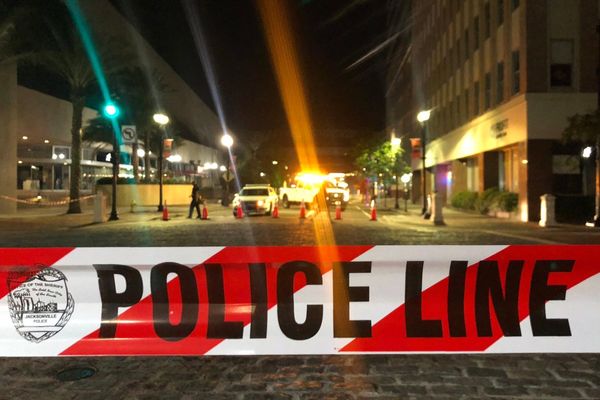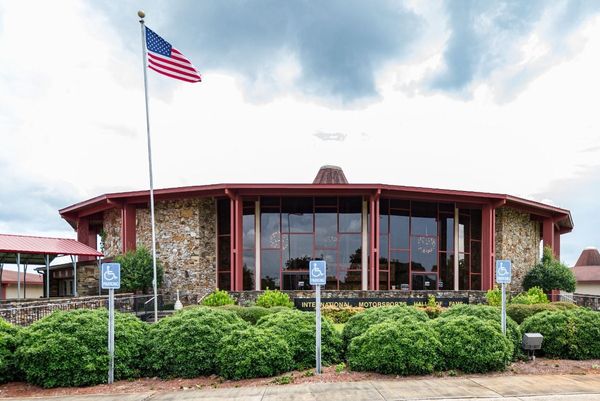
At least 14 unhoused people froze to death in 2021 in Los Angeles County, but the city of L.A. throws away vital winter items in sweeps of tent communities — and it did so again this year, during one of the coldest, rainiest winters in recent memory, unhoused people say. Mutual aid groups who distribute winter gear say they are caught in a painful, expensive cycle with the city, distributing the items one week and watching them get thrown away the next.
One such raid took place on Jan. 12, when city sanitation crews swept an unhoused community under the 405 freeway at Venice Boulevard and Globe Avenue. The crews came at a moment when the department was overwhelmed. For the prior three weeks in Los Angeles, a series of atmospheric rivers had dropped 11 inches of rain in the city. By the time Mayor Karen Bass declared a state of emergency on the 13th, Angelenos had sent in 385 flooding complaints to the Department of Sanitation, only 38% of which it could address.
Still, sanitation crews found time to conduct a “major cleaning” at the site, which organizers call “the Bridge.” Unhoused residents watched on as crews threw their cold weather gear in a garbage truck: their tents, tarps, sleeping bags, puffy jackets and other warm clothes and lanterns, leaving them to scrounge for replacements or be exposed to the elements.
“I got sick afterward. It’s one of your worst fears to get pneumonia. Certain things are a death sentence out here,” says Kalic Chambers, who says he lost “everything” in the Jan. 12 sweep at the Bridge.
A day before the sweep, three mutual aid volunteer groups spent nearly $5,000 on winter items for the residents, according to receipts shared by Palms Unhoused Mutual Aid (PUMA) organizer Ndindi Kitonga. PUMA does weekly outreach at the Bridge. After the sweep, PUMA spent another $1,500 replacing the warm clothes, tents and sleeping bags.
“We get stuff out to people constantly,” says Bitta Sharma, a mutual aid volunteer based in Mar Vista. “It’s just constantly thrown in the dumpster in freezing temperatures.”
“Every time they take something they make it harder to survive.”~ Chicago, unhoused Los Angeles resident
Los Angeles’ usually warm weather is responsible for its relative lack of shelter. Colder cities like New York aggressively built shelter in the 20th century, but Los Angeles did not. In 2022, the county offered over 20,000 shelter beds and interim units for an estimated 70,000 unhoused people, according to the Los Angeles Homeless Services Authority (LAHSA). New York, by contrast, says it shelters around 70,000 unhoused people. In 2018, more unhoused people died of hypothermia in L.A. than in New York and San Francisco combined.
A Bridge resident who identified himself only as “Chicago” says he had pneumonia for two weeks when sanitation crews arrived. “This is the coldest winter I’ve ever experienced,” he says. Sanitation crews threw out his tent, which was certified for cold weather. The two-man tent he replaced it with was not — and was too small to light fires in, a necessity in the winter months, he and his friend Omen explain.
“Every time they take something they make it harder to survive,” Chicago says. “It was bone cold. At 3:30 in the morning, it seems like the temperature drops 20 degrees.”
A spokesperson for Councilmember Katy Yaroslavsky, whose office ordered the Jan. 12 sweep at the bridge, wrote in a statement that the city will replace “any tents and blankets that must be disposed of for sanitary reasons” at future enforcement sweeps.
“Councilwoman Yaroslavsky does not believe that moving people from block to block is an effective approach to solving homelessness,” spokesperson Leo Daube wrote in an email. “But while we are working to bring beds online, we must maintain public health and sanitation standards for unhoused people and surrounding neighborhoods.”
Since Jan. 6, the city of Los Angeles has conducted 595 different encampment sweeps, according to the major clean-up schedules it produces each day, which L.A. TACO reporter Lexis-Olivier Ray obtains through record request, then distributes through text message.
The sweeps were spread across just the 26 days for which Ray was able to get records — a daily average of around 23 encampment sweeps.
That tally excludes “spot cleans,” when sanitation workers clean tent sites without confiscating unattended items. It also excludes operations of Inside Safe, Mayor Bass’ new program placing unhoused residents in motels in exchange for forfeiting their tents.
“Major clean-ups” take place under the city’s Cleaning and Rapid Engagement (CARE) program, which launched in 2019. The program was supposed to be more humane because it removed the police from directly participating in the sweeps, placing them on call nearby instead. It also incorporated outreach workers from LAHSA, who are supposed to connect residents with shelter. More reporting by L.A. TACO’s Ray shows that of the 30,000 Angelenos enrolled in the CARE outreach program, fewer than 10% were placed in temporary shelter and around 0.002% (63 people) were placed in permanent housing.
“We don’t have the staff to handle thousands of calls a day.”~ Molly Rysman, chief programs officer, Los Angeles Homeless Services Authority
Joshua Thorn, who lives in Hollywood, says he slept on the ground, covered only by his hoodie in the rain, after his tent was seized this winter. “You shake while you’re sleeping,” he says.
Molly Rysman, chief programs officer at LAHSA, says global warming has exacerbated winter conditions. This year, the county opened 270 winter shelter beds for the period between November and March.
It used to open around 1,000, but those numbers declined during the pandemic because a number of the winter shelters have converted to year-round shelters as L.A.’s homelessness crisis worsens, according to Rysman, while some offered fewer beds because of COVID-19 concerns.
This year, the county launched an augmented winter shelter program that offers around 500 motel vouchers in extreme conditions.
The vouchers become active when weather is both rainy and cold, or it rains more than an inch in 24 hours, or three days of cold weather combine with nightly temperatures that drop below freezing with wind chill.
“We’ve been almost consistently in augmented winter shelter activation,” Rysman says. “Originally we thought we’d use motels for three or four weeks of the season. We’ve had motels essentially activated since the end of December. It’s been a very cold, very wet winter.”
County residents must call its 211 hotline to get a winter motel voucher, and 211 workers have been overwhelmed with calls, according to Rysman.
“We don’t have the staff to handle thousands of calls a day, and we don’t have the funding for the vouchers,” she says. “We don’t have enough rooms to accommodate all of the 211 calls.”
“In New York, when it’s cold, they just round people up and get them inside. Out here, they don’t do that.”~ Kalic Chambers, unhoused Los Angeles resident
Just 16 motels in the city of Los Angeles are currently accepting vouchers, LAHSA told radio station KCRW in early December.
Many unhoused people know that the chaos of L.A.’s winter shelter program is not normal in the rest of the United States.
“In New York, when it’s cold, they just round people up and get them inside,” says Kalic Chambers, who was born and raised in Queens. “Out here, they don’t do that. And they don’t even care what condition you’re in. They just leave you.”
Chambers says “three or four” of his friends have died of hypothermia in his time living outside.
After the atmospheric rivers finally abated, temperatures actually dropped in Los Angeles. On Feb. 16, nighttime temperatures were in the 30s in the San Fernando Valley and the National Weather Service issued a frost advisory.
The next morning, sanitation crews swept the belongings of unhoused residents at Parthenia Street and Etiwanda Avenue in the valley neighborhood of Northridge. Around 9 a.m., LAHSA workers were visibly shivering, with their hands thrust in their pockets.
In Canoga Park, Erica Acevedo says she lost her tent, clothes and shoes in a sweep two days before. The chill of the subsequent nights have left her without sleep, too.
“Your hands feel like when you burn them, and then you put them in ice real quick,” she says, opening and closing her fingers.
On Feb. 6 at the Bridge, Chicago and his neighbors sit in makeshift tents around the corner from their usual spot under the 405 freeway. They were swept again that morning in the portion of the site that falls in Councilmember Traci Park’s district. (The Bridge tents fall in several jurisdictions, including Culver City.)
They laugh at the idea that temperatures are getting warmer in Los Angeles. To housed people, the L.A. winter might lapse in February, they explain, as daytime temperatures rise back into the 60s and 70s. But those who sleep outside know the winter is far from over.
“I’ll let you know when it is,” Chicago says.







